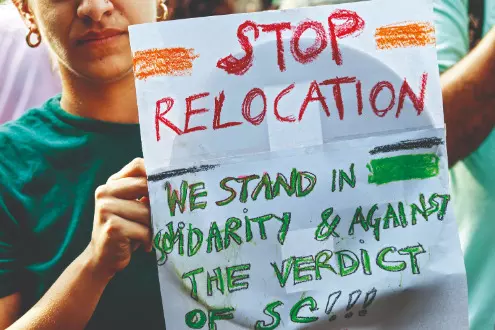Eight weeks, ten lakh dogs, and almost no shelters: Reality bites

New Delhi: Delhi is estimated to have around 10 lakh stray dogs, yet the infrastructure to house them is almost non-existent. The last official dog census in 2009 recorded 5.6 lakh strays, but no new survey has been conducted since. Based on current estimates, even if each shelter could house 500 dogs, at least 2,000 such facilities would be required.
The Municipal Corporation of Delhi (MCD), however, operates just 20 animal control centres, designed for short-term care following sterilisation and vaccination before the animals are released. Even if these were converted into permanent shelters, their capacity would be limited to about 5,000 dogs — less than five per cent of what is needed.
Constructing the required number of shelters will demand considerable funds, suitable land away from residential neighbourhoods, and time.
The task is further complicated by operational hurdles. At present, each MCD zone has only two or three vans for dog-catching and an acute shortage of trained handlers.
Dogs’ territorial nature makes capturing them challenging, and attempts to remove them are likely to meet resistance from local residents and animal lovers. Feeding lakhs of dogs every day would cost hundreds of crores annually, in addition to expenses for animal ambulances, veterinary doctors, medicines, CCTV cameras and salaries for shelter staff. All this comes at a time when civic bodies are already struggling to maintain basic services such as waste collection and drain cleaning.
Despite these constraints, the Supreme Court has directed civic bodies in Delhi-NCR to remove all stray dogs from residential neighbourhoods and relocate them to shelters
within eight weeks.
The court, describing the stray dog situation as “extremely grim,” has insisted that the streets must be “absolutely free” of them. Supporters of the ruling cite the rising number of dog attacks, while critics call it both inhumane and unworkable. The backlash has been immediate. On Monday, animal lovers, feeders and rescuers gathered at India Gate to protest against the order, leading to an FIR being registered by Delhi Police under sections of the Bharatiya Nyaya Sanhita, including disobedience of a public servant’s order. Former Delhi Lieutenant Governor Najeeb Jung criticised the action as “childish” and urged police to withdraw the cases, arguing that protecting animals should not be criminalised. Protesters claimed that forcibly removing sterilised and vaccinated dogs violates the Animal Birth Control (ABC) Rules, which require dogs to be returned to their original territories. They also said that rabies deaths had been exaggerated in the media, with official data showing only 54 suspected fatalities in 2024.
Demonstrations have continued in Connaught Place, where activists held placards reading “Stop relocation” and “Beware: Kaal Bhairav is watching,” while some displayed images of Lord Shiva with a dog beside him to highlight cultural and spiritual connections. Many argued that the order would cause overcrowding, neglect and disease in shelters, and warned that dogs removed from their territories often return, especially when puppies are born.
In Noida, where about 1.5 lakh stray dogs live, local activists pointed out that there are no facilities to accommodate them. They warned of the lack of veterinary staff, medicines, food supply systems and proper shelter structures, and expressed fears that dogs might be abandoned on empty plots without care, leading to starvation and fights.
Peta India has argued that displacement has never worked to control dog populations or rabies, stressing that sterilisation and vaccination are the only effective, humane solutions.
For families of victims of dog attacks, however, the court’s decision is a source of relief. In northwest Delhi’s Pooth Kalan, six-year-old Chhavi Sharma died in July after being bitten by a stray dog in June.
Her aunt, Krishna Devi, called the verdict “justice born of loss,” saying, “I hope there are no more Chhavis.” She urged the creation of dog shelters similar to gaushalas and demanded accountability for feeders who, she alleged, leave food on the streets, encouraging dogs to form packs that chase children. In Ashok Vihar, Dheeraj Ahuja’s seven-year-old son — once a regular feeder — was mauled by a stray and had to take ten injections. Ahuja supports the Supreme Court’s order but says there must be a balance that ensures both public safety and humane treatment of animals.
With public opinion sharply divided, resources severely limited, and a tight deadline, the question remains whether Delhi-NCR’s civic bodies can realistically carry out the Supreme Court’s sweeping directive without creating a fresh crisis for both
people and animals.
The New Delhi Municipal Council has begun assessing resources and budget needs for the relocation drive, while the Delhi government, led by Animal Husbandry Minister Kapil Mishra, has promised to approach the task with “compassion and empathy.” Officials said two weeks will be spent on research and consultations with animal welfare groups before drafting a plan, even as the MCD clarified that recent dog-catching was part of Independence Day preparations, not the court order.



